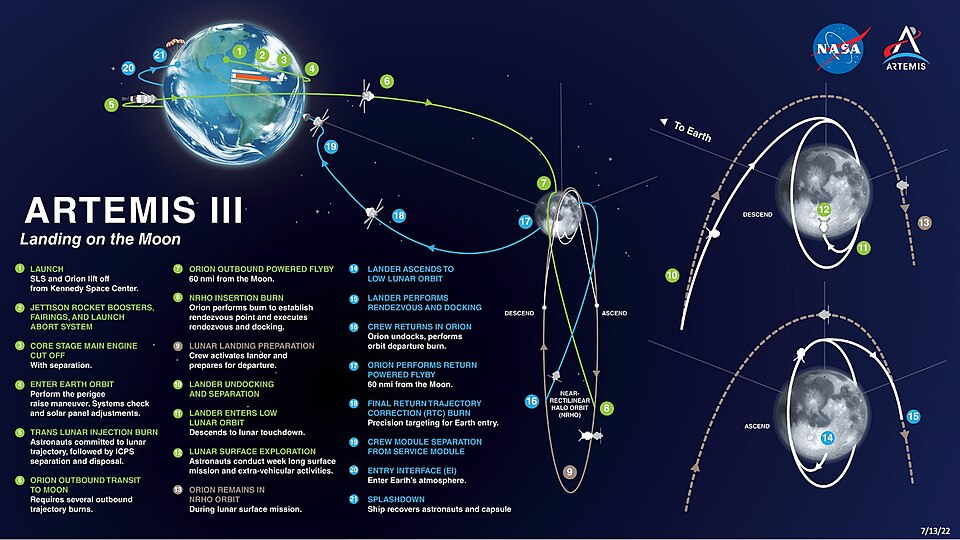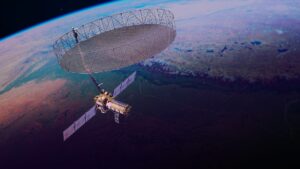NASA has officially confirmed that Artemis III, the first crewed mission to land on the Moon since Apollo 17 in 1972, is scheduled for launch in late 2026. As part of NASA’s broader Artemis program, Artemis III aims to land astronauts on the lunar South Pole—an unexplored and scientifically promising region that could hold water ice and other vital resources.
Mission Objectives
Artemis III’s primary goals include:
- Lunar landing: Land two astronauts near the Moon’s South Pole
- Scientific exploration: Collect samples and conduct experiments in permanently shadowed regions
- Resource scouting: Assess ice deposits and mineral composition
- Habitat testing: Evaluate technologies needed for long-term lunar habitation
The mission will also test life support systems, mobility tools, and communication infrastructure designed for extreme lunar environments.
Launch and Hardware Overview
Artemis III will launch aboard NASA’s Space Launch System (SLS), the most powerful rocket ever built. The crew will ride the Orion spacecraft to lunar orbit, where they will transfer to a SpaceX-built lunar lander known as Starship HLS.
Key components of the mission include:
- Orion capsule: Built by Lockheed Martin for deep-space transport
- SpaceX Starship HLS: Modified version of Starship for Moon landings
- Gateway docking (future): Though not used for Artemis III, the Gateway station will support later missions
The lunar lander will dock in orbit with Orion before descending to the surface with two astronauts, while the other crew members remain aboard Orion.
Crew and Diversity Milestone
While the final Artemis III crew has not yet been named, NASA has committed to landing the first woman and the first person of color on the lunar surface during this mission. These milestones are part of the agency’s effort to make space exploration more inclusive and representative of humanity.
NASA has already assembled the Artemis Team, a group of 18 astronauts—including veterans and new recruits—who are undergoing lunar mission training.
Why the Lunar South Pole?
The Moon’s South Pole is scientifically important because:
- It hosts permanently shadowed regions that may contain frozen water
- Its rugged terrain offers insight into the Moon’s geologic history
- Water ice could provide oxygen, hydrogen fuel, and drinking water
These characteristics make the South Pole a promising location for future lunar habitats and supply depots to support missions to Mars and beyond.
International Collaboration
Artemis III is part of a broader framework of international space collaboration. The mission is supported by the Artemis Accords, signed by over 30 nations, including Japan, Canada, the UK, and members of the European Space Agency (ESA).
Contributions include:
- Canada: Providing robotic systems for lunar exploration
- ESA: Supplying service modules for Orion spacecraft
- Japan: Supporting environmental systems and lunar rover technology
This unified approach not only spreads costs and benefits but also strengthens diplomatic and scientific cooperation in space.
Scientific Goals and Payloads
Artemis III will carry a suite of scientific instruments, including:
- Seismometers to study moonquakes and subsurface structures
- Mass spectrometers to analyze lunar volatiles
- Geologic sampling kits for regolith and ice
- Biological sensors to test the effects of low gravity on human physiology
All collected data will help prepare for longer missions, including a potential Artemis V base camp and future Mars expeditions.
Challenges and Delays
While Artemis III is on track for 2026, challenges remain:
- Hardware readiness: SpaceX’s Starship HLS must complete multiple flight tests
- Budget constraints: Congressional funding remains a risk factor
- Safety testing: Life support systems and EVA suits still require validation
NASA has stressed that Artemis III will not launch until every critical component has passed safety benchmarks.




